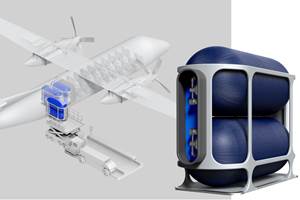The best and brightest
HPC Editor-in-chief Jeff Sloan asks: How does the composites industry “sell” to students the huge range of opportunities it has to offer?
My kids’ high school opened in 1997 and, from the start, was an incomplete structure. For lack of funds, the school district was forced to leave out some amenities that are found in most schools — auditorium, swimming pool, running track, etc. Over the years, money was raised to add more classrooms, but that was the extent of the expansion. In the fall of 2012, however, the community approved funds that would enable the district to construct not only an auditorium and track, but also 10 new classrooms, a new (high-security) entrance and a ... wood shop. This last one got my attention.
“Wood?!” I exclaimed, when my wife, who teaches at the school, broke the news. “What about composites?”
I sat down and wrote a lengthy e-mail to the school’s principal, explaining, first, what composites are, second, how composite parts are made and, third, how the teaching of composites fabrication methods would provide students with real, useful and unique skills that are desperately needed throughout the world. At a sit-down meeting with the principal, the activities director and the would-be wood-shop teacher, I again made my case for composites, drawing on the Boeing 787, the Airbus A350 XWB, wind blades, the BMW i3 and other real-world examples to support my argument.
All of this was new to them, but then came the surprise: The school agreed to partition 600 ft2/55.7m2 of space in the wood shop and devote it to the creation of a composites lab. Not only that, but the wood shop teacher said he’d be willing to learn about composites and then teach the class.
Under construction right now, the addition should open by January 2015, in time for second-semester classes. Outfitting the composites lab will fall to me and a few other parents who have some composites knowledge and are eager to see the lab work (anyone with spare resin, fiber, mold-release or little-used equipment that needs a good home are encouraged to contact me at jeff@compositesworld.com).
All of this got me to thinking about how well parents, educators and employers do in making sure our students are attuned to the needs of a working world. There is, it seems, a significant disconnect between what employers seek in employees and what sort of potential employee our education systems deliver. Every spring, as high school and college graduates collect their diplomas, graduation speakers the world over exhort them to “follow your passion” or “be your dream” or “make a difference.” But not all passions pay a living wage, and not all dreams line up with the demands of the job market.
Our educators try, sporadically, to get students interested in the science, technology, engineering and math (STEM) subjects that are in obvious and general demand, but American students, today, notoriously lag behind the rest of the world here — despite the fact that engineers are in great demand and command high starting salaries.
How does the working world communicate to students about the skills it needs? More specifically, how does the composites industry “sell” to students the huge range of opportunities it has to offer? Maybe high-schoolers who have an interest in and propensity for math and engineering should be offered a chance to tour a composites fabrication plant or a moldmaking shop. They could meet the engineers and designers who have the skills that are needed by the industry, and learn how those skills can be applied. Maybe composites professionals — of all stripes — should stop hoping that this industry will catch the eye of the best and brightest, and start actively looking for and recruiting the best and brightest.
Related Content
Materials & Processes: Composites fibers and resins
Compared to legacy materials like steel, aluminum, iron and titanium, composites are still coming of age, and only just now are being better understood by design and manufacturing engineers. However, composites’ physical properties — combined with unbeatable light weight — make them undeniably attractive.
Read MoreMoving toward next-generation wind blade recycling
Suppliers, fabricators and OEMs across the composite wind blade supply chain ramp up existing technologies, develop better reclamation methods and design more recyclable wind blades.
Read MoreNovel composite technology replaces welded joints in tubular structures
The Tree Composites TC-joint replaces traditional welding in jacket foundations for offshore wind turbine generator applications, advancing the world’s quest for fast, sustainable energy deployment.
Read MoreCarbon fiber in pressure vessels for hydrogen
The emerging H2 economy drives tank development for aircraft, ships and gas transport.
Read MoreRead Next
CW’s 2024 Top Shops survey offers new approach to benchmarking
Respondents that complete the survey by April 30, 2024, have the chance to be recognized as an honoree.
Read MoreFrom the CW Archives: The tale of the thermoplastic cryotank
In 2006, guest columnist Bob Hartunian related the story of his efforts two decades prior, while at McDonnell Douglas, to develop a thermoplastic composite crytank for hydrogen storage. He learned a lot of lessons.
Read MoreComposites end markets: Energy (2024)
Composites are used widely in oil/gas, wind and other renewable energy applications. Despite market challenges, growth potential and innovation for composites continue.
Read More










.jpg;maxWidth=300;quality=90)














